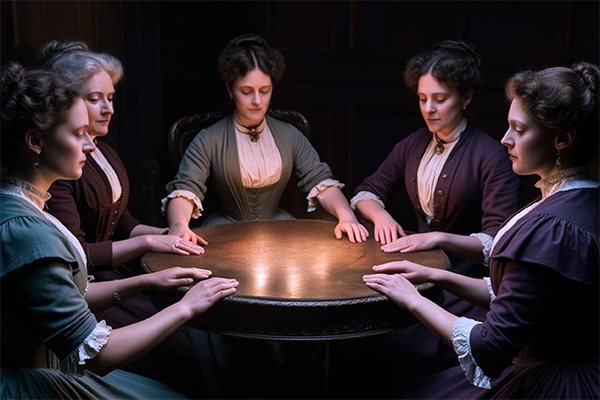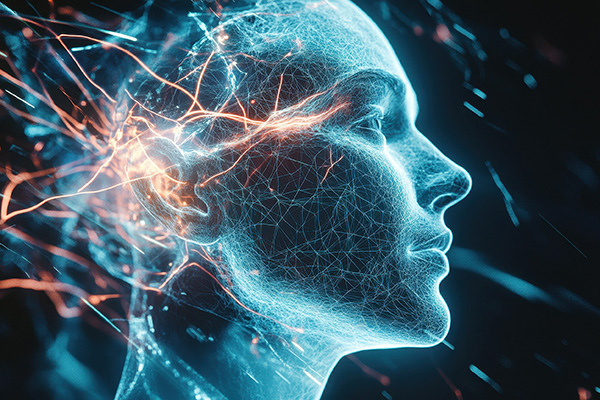Messages Obtained from the Spirit Realm via Voice Recordings
 Many years past, in one of the psychic circle gatherings I organized, a strong male voice unexpectedly resonated from just outside the room. Everyone quickly believed it was my husband, yet he was the only one absent at that moment. We hadn’t heard the electric gate open or his vehicle approach.
Many years past, in one of the psychic circle gatherings I organized, a strong male voice unexpectedly resonated from just outside the room. Everyone quickly believed it was my husband, yet he was the only one absent at that moment. We hadn’t heard the electric gate open or his vehicle approach.
The voice explicitly stated, “Hello, girls.” My first thought was of my father, who had frequently participated in our monthly circles before his passing years ago.
I hold a profound respect for experiences akin to this. It requires significant energy for spirits to connect with us in such a palpable manner through sound. Sound acts as a dense, tangible vibration, one of the lowest frequencies for a spirit to manipulate. Different from the quickness and nuance of mental, emotional, or psychic communication, external sound demands much more intentional shaping of energy.
To be heard audibly, spirits must bridge an extensive vibrational discrepancy by lowering their frequency to become detectable by our physical senses. This explains why such experiences are infrequent and impactful, needing effort from the spirit and increased sensitivity, openness, and respect from us as the receivers.
Following the invention of the telephone, Alexander Graham Bell purportedly dedicated time to creating a device that could capture the voices of spirits. Sadly, he died before achieving that goal. I think he would be fascinated by the advanced digital devices we currently utilize to detect paranormal occurrences.
On some days, I feel somewhat akin to how Mr. Bell might feel if he were alive today. Technology has equipped us with tools capable of registering subtle, unexplainable sounds.
I have often heard the voices of spirits calling my name — clear, familiar, and as authentic as the voices of those among the living ~ Emma Hardinge Britten
Electronic voice phenomenon (EVP) recorders, for instance, have become a staple in a paranormal investigator’s toolkit. These highly sensitive digital devices can capture faint sounds often unnoticed by the human ear. Investigators additionally employ audio editing software to filter and enhance recordings, clarifying the voices of spirits.
Moreover, we possess gadgets referred to as “spirit boxes,” such as the SB-7. These devices swiftly scan radio frequencies, enabling spirits to communicate in fragmented words or phrases. Unlike EVP, which undergoes analysis afterward, spirit boxes facilitate real-time, interactive communication.
Analog Echoes From The Past
Times have undoubtedly transformed since my teenage years. Back then, my family resided in northern England, where my father owned a music recording studio. One day, he received a phone call from a national Sunday newspaper. They required a sound engineer equipped with portable gear who could work the evening shift. The task was to record sounds within a house located on a dilapidated council estate near the docklands.
The house had captured local media interest as a haunted site following a series of unexplainable events. Despite a housing shortage, tenants continued vacating the property. When questioned why, many simply responded in their thick Liverpool accents, “It’s spooky, so I left!”
One night around 10 p.m., my father, a sound engineer and police sergeant, arrived at the house with me and the necessary equipment. Since most reported activity had transpired in the upstairs front bedroom, we set up there and arranged for recording to commence at midnight. Afterward, we moved downstairs to the kitchen.
Several hours later, we packed up and departed, believing the night had provided no noteworthy material. The following day, back at the studio, we uploaded the recording onto the main full-track machine. This was during the time of tapes, prior to digital audio.
After a few moments of silence, just as we were about to switch it off, garbled noises began to surface. We adjusted the speed, yet there was no alteration. We modified it again, and suddenly, we heard voices and the clinking of glasses, as though we were in a bustling pub. Then, a man with a robust northern accent exclaimed, “More ale, lass!”
More silence ensued. After that, we discerned the soft whimpering of a young-sounding individual, accompanied by a deep male voice gently stating, “Come on now, I won’t hurt you.” And then…silence.
Further investigation unveiled that the estate was situated on the site of a former inn primarily visited by sailors over a century ago. Whether what we captured were echoes from the past or a spirit establishing contact through sound energy, one thing became evident: spirit is never distant.
This word was conveyed to me: ‘It is I, be not afraid.’ These words were articulated very tenderly, and without sound, as if they were a soft whisper to the soul ~ Julian of Norwich
Divine Dialogue, Or Mental Delusion?
Most individuals perceive “hearing voices” as an indicator of mental illness — something to fear, treat, or conceal. In psychiatry, it’s classified as an auditory hallucination. Nonetheless, this viewpoint can overlook a crucial aspect: for some individuals, hearing a voice can be a deeply spiritual or significant experience.
A recent study conducted by Durham University in the UK scrutinized this phenomenon more thoroughly. The researchers interviewed 58 participants, predominantly Christians, who claimed to have heard a voice that they believed held spiritual significance. These occurrences were not commonplace. Most happened infrequently, commenced in adulthood, and were often tied to prayer or quiet reflection.
<p Nearly 90% of the participants felt the voice originated from a divine source. The voices were neither frightening nor chaotic. Often, it was merely one voice—a calm, gentle presence. Sometimes it resembled a thought softly implanted in their mind rather than a sound heard aloud.
This type of experience does not align with the conventional medical narrative regarding “hearing voices.” And that’s the crux. The study insinuates that not all voices should be interpreted as symptoms. Occasionally, voices may enrich someone’s spiritual existence, bringing comfort, guidance, or greater meaning.
Never underestimate the importance of spiritual experiences linked to sound. Hearing spirits can provide insight, solace, and direction during uncertain times. These interactions affirm that we inhabit an interconnected universe and reinforce our belief in realities beyond the visible world. They serve as voice notes from the other side — channels of sound between the seen and the unseen — embodying the enigma of existence itself.
The veil is thinner than we imagine. Love is the universal frequency connecting all dimensions. Remain open and gentle, and trust the whispers of the spirit that lead you home.
|
Shani is a certified practitioner in Reiki, aromatherapy, reflexology, body spin, and animal telepathy who undertook psychic development training at the Arthur Findlay College of Psychic Research in England. A published author, her writings and predictions have appeared in numerous esteemed magazines and on psychic websites, and she has provided readings for many celebrities and even heads of state in Africa. Due to her empathetic nature, people find it easy to connect with her. Each month, she participates in a psychic circle, and the insights that emerge from Spirit never fail to astonish everyone present. Although she was born in London, Shani has traversed the globe and studied the art of African Mysticism, imparting her unique flavor to those seeking her remarkable skills. What she has gathered from her extensive travels abroad, is that clients often harbor a deep yearning to reconnect with the essence of their being. Secure a reading with Shani at PsychicAccess.com. |
The notion of receiving communications from the spirit realm through voice recordings is an enchanting and compelling phenomenon that has piqued the interest of numerous individuals seeking guidance, comfort, and affirmation from beyond. This practice involves utilizing a recording device, such as a digital voice recorder or smartphone, to capture ambient sounds or voices in hope of receiving messages from departed loved ones, spirit guides, or other entities of the spirit realm.
Many who have encountered this phenomenon recount hearing voices, whispers, or other sounds on their recordings that they believe are messages from the spirit realm. These messages can vary from simple words of encouragement and guidance to more intricate and detailed communications offering insights into specific situations or happenings in their lives.
One of the most prevalent methods employed to receive messages from the spirit realm through voice recordings is known as Electronic Voice Phenomenon (EVP). EVP refers to the process of capturing voices or sounds on recordings that were inaudible at the time of the recording. These voices are thought to be messages from spirits or entities in the spirit realm attempting to communicate with the living.
Various theories exist regarding how EVP functions, with some positing that spirits are able to manipulate the audio frequencies present in the environment to communicate through electronic devices, whereas others speculate that the messages are transmitted telepathically and then captured on the recording apparatus.
While some skeptics may dismiss the notion of receiving messages from the spirit realm via voice recordings as mere coincidence or the product of pareidolia (the propensity to recognize meaningful patterns in random stimuli), many individuals who have personal experiences with EVP vouch for its credibility and the significant influence it has had on their lives.
For those interested in delving deeper into this phenomenon, there are some guidelines to consider when attempting to capture messages from the spirit realm through voice recordings. It’s essential to create a serene and quiet environment devoid of distractions, as background noise can disrupt the recording process. Additionally, it’s advisable to pose specific questions or set intentions prior to recording, as this can help concentrate the energy and intention behind the messages being received.
Ultimately, the practice of receiving messages from the spirit realm through voice recordings offers a deeply personal and spiritual experience that can provide solace, guidance, and validation to those seeking connection with the other side. Whether you hold a belief in the paranormal or are simply intrigued by the mysteries of the unknown, exploring EVP and other methods of communication with the spirit realm may lead you on a transformative and enlightening journey. Continue reading














